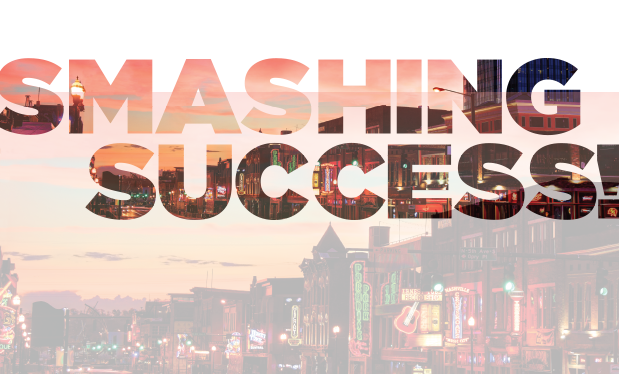"I don't know how to help him," lamented the boss. "He's a terrific worker, smart and engaging, yet something is holding him back from wanting to grow and really own his work."
I frequently hear this kind of frustration from managers. At first, it may beg the question: Why does it matter if the employee already has so many wonderful attributes and he or she is getting the work done? The answer is more apparent when the frame of reference is changed from a short-term view to a long-term one.
Over time, organizations and employees benefit greatly when staff members move from transactional relationships to invested ones. Employees who care about their work are not simply satisfied with doing tasks well. They look past transactions into job ownership.
Job ownership leads to inquisitive staff members interested in improving themselves, their jobs and the company overall. When an employee cares about his or her work, morale improves, and the level of commitment grows beyond just doing everything well-enough. Such efforts reveal new efficiencies that positively affect safety, quality, profitability and co-worker morale as empowered staff reach out to help and support each other.
To create such a growth environment in your company, become a leadership coach for your employees.
What is leadership coaching?
Leadership coaching is a discipline taught in business schools. According to the International Coaching Federation, a leading organization dedicated to advancing the coaching profession, "leadership coaching is partnering with clients in a thought- provoking, creative process that inspires them to maximize their personal and professional potential."
The inspirational partnering aspect of leadership coaching makes this coaching technique unique. Leadership coaching appreciates the coachee (the person receiving the coaching) is his or her best and highest resource for change and growth.
As such, a leadership coach will work with a coachee to navigate how to achieve professional and personal aspirations.
It is easy to confuse leadership coaching with mentoring, teaching, counseling, consulting or therapy. What sets leadership coaching apart is perspective and a timeline. Mentoring, teaching, counseling and consulting require the mentor, consultant, etc., to provide his or her advice, experience and task skill expertise as examples to help the recipient. These techniques make the teachers the holders of expertise and use different approaches to imbue their knowledge on a recipient.
Although professional coaching has roots similar to therapy in its approach to the client, it is not about diagnosing psychological matters or anything in that realm. Coaching in terms of a person's life timeline is basically present-forward; it does not address why someone is the way he or she is but rather helps explore how a recognized behavior is helpful or unhelpful to professional career goal attainment going forward.
A leadership coach quiets his or her teaching role and uses effective question-asking techniques to assist coachees when determining what the coachees want from their work and themselves. The goal is to create an environment that allows for a perspective shift. When a coachee sees himself or herself from a vantage point not previously seen, he or she asks different questions of himself or herself and his or her goals, leading to awareness and focus. At its best, leadership coaching is transformational.
"Performance minus interference equals potential," says Neil Stroul, Ph.D., a founding faculty member of Georgetown University's Certificate in Leadership Coaching Program. "Coaches increase potential and decrease interference."
Coaching is a process and not typically a one-off event. The flow of a coaching effort has a beginning, middle and end. Commitment is important. There are professional leadership coaches who are available to help your organization when there is a need for significant development, such as someone needing help to transition to a senior-level position, working with senior leadership to develop a team or establishing a strategic plan.
However, adopting some leadership coach techniques can be a great help to you and any leader who is working day-to-day with foremen, superintendents or others needing directional guidance.
The beginning
First, leadership coaching is about establishing an agreement for the effort between a coach and a coachee. It is a permission-based discussion, meaning the coach does not direct but asks for permission to proceed with everything associated with the conversation. The purpose is to help establish the coachee as director and the coach as partner.
The agreement is necessary to anchor the dialogue. However, it is not uncommon for the entire first session to be about finding the agreement. An employee may want to talk about a lot of things, so being able to prioritize questions effectively is top of mind for a coach. Once priority is established, honing the agreement down to a goal is the objective. Once the goal is revealed, establishing an agreement becomes easier.
An agreement can look like anything but includes a statement such as: "At the end of this coaching work, I'd like to have a plan for how to deal with my crew members without always getting so angry" or "At the end of this coaching work, I'd like to have a pathway identified toward becoming a superintendent." You can call this a meta-agreement or an overarching agreement. In other words, it is important to appreciate that it likely will take more than one session to properly address the matter.
The middle
Now that the agreement is established, conversations occur that may require "peeling back the layers." It is rarely a direct route because each layer might reveal attributes or previously unrealized experiences and emotions that need to be discussed. This is where you will find subsequent sessions may have their own sub-agreements as their focus. A sub-agreement relates to the main agreement, but because of a newly realized layer it requires attention.
Key skills that become apparent during the middle of a coaching conversation are listening and asking questions.
Listening
Above all else, effective listening is a coach's greatest asset, yet it is phenomenally challenging to do well. Hearing is the biological occurrence of processing sound. According to Language and the Pursuit of Leadership Excellence: How Extraordinary Leaders Build Relationships, Shape Culture and Drive Breakthrough Results, by Chalmers Brothers, Vinay Kumar and Julio Olalla, listening " ... is linguistic, it lives in language. Listening is active interpretation, active internal storytelling. Listening is definitely not passively receiving objective information, but instead has everything to do with building a story, a narrative, and interpretation about what is said and heard. Listening is where meaning gets generated and meaning matters."
Listening equals interpretation. Appreciating this provides the perspective that as you listen you do it through your "lenses"—gender, race, affiliations, experiences, etc. Equally, when responding you're doing the same. Having this perspective is self-awareness. Being able to affect it by quieting it is self-management.
So how do you listen more effectively? The first step is to not talk. I know it sounds simple, but it is not easy. Try to have a conversation with someone who is at the same level in your organization and listen to what he or she is saying without adding to the story either verbally or mentally. It is quite challenging and is a wonderful exercise to practice, but it takes discipline. It is similar to wanting to improve your golf swing—it takes quieting and practice, over and over. Before you know it, you're doing it and it's an amazing experience.
What my students notice after I take them through a coaching exercise to highlight listening skills is how difficult it is not to talk and solve the problem presented, but by not jumping in on the conversation, they discover the value of trying to listen and the amount of information they otherwise would have missed. They also realize how enticing and fun it is to do once they get the hang of it.
What also is revealed by coachees in this exercise is how great it is to be heard for a change. Even during an exercise that uses real-life situations in a practice setting, a coachee experiences a connection he or she didn't expect. (By the way, universally, coachees report leaving the coaching exercise with a different perspective about their problems that helped them.) Listening has unrealized benefits for both parties.
Asking questions
Psychiatrist R.D. Laing said: "The range of what we think and do is limited by what we fail to notice. And because we fail to notice that we fail to notice, there is little we can do to change until we notice how failing to notice shapes our thoughts and deeds."
Yes, this presents a bit of a mental exercise, but it is one worth pondering: An effective coach helps you notice. How does he or she do that? He or she asks good questions.
In the realm of how to ask good questions, the first rule is to only ask "how" and "what" questions and not "why," "who" or "where" questions. Why-centered questions lead to story and judgement. When you ask why, you are either asking for the details that led to something or you have an opinion about what was said. Do not confuse this position by believing that why questions are not valuable; they are but minimally so in the coaching realm.
Recall that the coaching conversation is all about the coachee, not the coach. Unlike a consultant, mentor or teacher, what a coach believes has no bearing on the conversation. The coach does not direct; the coachee directs. This is a challenging assignment for coaches to learn and master.
Likewise, who and where questions, though valid for fact-finding, have limited value for the coach who is effectively listening to the coachee. The coachee will provide background details aplenty when prompted effectively.
Importantly, what and how questions are neutral. Nonverbal emphasis can change the tone of any question to be judgmental-sounding, so coaches must practice and rehearse to learn how to use nonverbal emphasis appropriately when questioning. Also, focusing your attention on simply asking how and what questions helps keep you in a more objective mindset. It is so easy to jump in with a question such as "why did you do x?" but it takes more thought to ask "what was behind your decision to do x?" or "how did you decide to make that move?"
Why questions, I have found, yield either a quick answer or a pondered "I don't know why" response, and it stops there. In either case, not a lot of objective thought goes into the answer. However, asking a narrower question using how or what was behind the decision, for example, gives the coachee a platform from which to consider his or her actions. Often, this leads to more questions until an appropriate—and oftentimes revealing—answer emerges. It is key to point out, again, the coach does not direct the coachee.
Coaching is a follower role. It is extremely challenging for a supervisor-coach to quiet his or her directorial role. But it must be done. And when accomplished, a relationship of trust is more easily established. From here the conversation often moves like a meandering water stream with seemingly never-ending pathways to follow.
The end result
Conversations can meander, but they rarely start or end without a purpose. Being mindful of time constraints and fatigue, a coach may ask a coachee a question such as: "What have you learned?" And from there, all kinds of answers can be uttered, but I have not experienced a coaching conversation where something new wasn't revealed at the end of that session or the beginning of the next. But executing from this new awareness isn't always straightforward or easy.
This sets the stage for the real work and learning from the coaching effort—what gets done by the coachee between sessions. At this point, a question to pose a coachee might be along the lines of: "Appreciating what you just revealed, what steps do you believe would be appropriate to take between now and our next conversation?" These steps and others revealed establish the hard work of the coaching relationship for the coachee.
The coaching conversation only goes so far—it is the words put into action that yield results of change and learning, often energizing and fulfilling the coachee. It also can reveal unrealized "walls" or new areas of frustration, which become fodder for the next interaction and, hopefully, learning, application, change and, eventually, growth.
It may appear the coaching effort is never-ending, but this is not the case. As I mentioned earlier, though it rarely is a one-off conversation and more likely is a series of meetings, having established a coaching agreement keeps the effort narrowed and focused.
As a coach, ask questions that relate to the coaching agreement to ensure time spent is in search of attaining its goal. It is common for goals to change as a result of the flow of coaching, but this means a new agreement should be established and a choice made as to whether it is appropriate to continue in the supervisor-as-coach setting or to move to a professional leadership coach or another approach.
In review
So, what can our lamenting boss use from the coaching playbook to help his employee? First, ascertain whether the employee would like to talk about his or her role in the company. Assuming this employee wants to achieve more, he or she will agree. Next, using what and how questions, help the employee articulate his or her vision for his or her future with the organization. Having acquired this information, the next step is to see whether a goal can be established, such as the employee becoming a foreman by the end of the year.
Once a goal is established, partner with the employee to establish a path. Remember, a mentor shows a worker what he or she needs to do to accomplish the goal. But in the coaching realm, the onus is placed on the worker (coachee) to do the work of finding out what is required to move up. He or she will work with you, the coach, to develop a game plan for success. It is possible a coachee might ask for advice from a coach. In this situation, to maintain the established relationship, ask permission to offer a suggestion.
You most likely will feel pulled to tell the worker what he or she needs to do. This is an understandable manager's desire to solve a problem. However, the leadership aspect of coaching appreciates this is about the employee—not the supervisor.
Coaching places the ownership path to success in the coachee's hands. This is an important distinction. Recall the mentor approach that tells a worker what to do based on his or her career experience. But if something the mentor suggests fails, it's the mentor's fault and blaming occurs. However, if the coachee decides on a path and something goes amiss, he or she is the one who returns to work with the coach on a revised plan of his or her own design.
A powerful experience
Leadership coaching is about shifting perspectives. It reveals positive outcomes and is a powerful experience. First and foremost, the employee feels heard. All healthy human beings have the need to belong and feel good about belonging; it transcends generational stereotyping. As a result, rapport is attained, and trust and relationships grow. This is fertile soil for employee empowerment and ownership. It is worth considering coaching as a leadership strategy to develop good employees despite the temptation to focus on managing the struggling ones.



